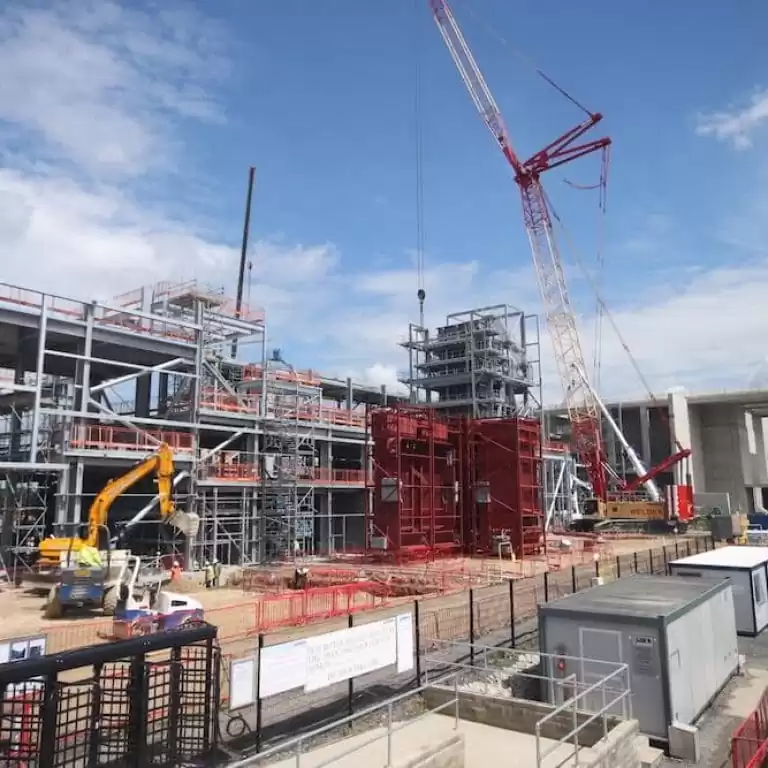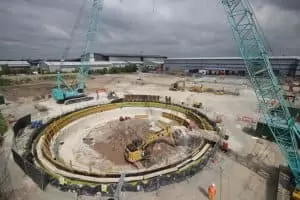
News Managing construction projects with remote photography
Nature and environment-based time-lapse sequences are often awe-inspiring. They rack up huge views on video sharing such as YouTube and Vimeo and command a growing presence across social media.

Images are often captured in Ultra High Definition – far better quality than the average consumer HD television could replicate – then placed together in post-production at 25 frames per second. This process gives the illusion of time lapsing quickly, but it still looks seamless.
Amateur photographers and professional filmmakers do not have the time to sit around and press the button on a camera, at regular intervals, to gather enough images to create a video. Instead, the camera is controlled by what is called an intervalometer.
This piece of equipment plugs into most modern DSLR cameras and instructs the equipment to take photos at set intervals – whether that be rapid capture or over a longer period of time.
Such high-quality images have multiple uses, however. Whereas landscape visuals are stunning, the ability of DSLR cameras and bespoke time-lapse systems can be utilised in the construction industry.
Of course, construction projects tend to fall into the latter category – they take place over a number of months or years. If you want a time-lapse capture of your building going up, nine times out of 10 the camera system is going to have to be placed outside. And herein lies a problem.
How do you ensure it functions correctly throughout the build? What if the battery powering your DSLR runs out? How do you protect equipment from the elements? And is capturing your site really useful?
It is not practical to constantly check on a camera once it is out in the field, particularly in urban areas where construction is most likely going to take place. The complexities of a project start with the need to position the system, which can mean anything from erecting scaffolding to reach a suitable securing, winching into place on a pole, or fixing to the roof of a building or other structure. This requires extensive training, correct qualifications, and attention to detail to ensure the safety of construction workers, the public, and also the ‘time-lapser’ [one day this might actually become a job title… one day].
And once it is in place, it requires remote monitoring. It is impractical for hobbyists to bear the brunt of this, which is where professional photography companies come into their own. With sophisticated camera set-ups – rather than simply intervalometers plugged into DSLRs – they can monitor the camera, ensuring it is capturing at its optimum capacity. This means remotely changing things, such as interval rates and exposure, to ensure every detail is captured in the highest quality possible.
Battery life in point-and-shoot digital cameras is famously terrible. Rechargeable solutions are available, but if running off AA batteries is not an option in everyday use, it does not bear thinking about long-term captures. A main connection is one of two solutions to ensure constant operation of the system, but this requires health and safety checks and qualified electricians to put into place. The other options for a power source are solar, wind, or other renewable energy, but this is costly when applied to an individual project and completely out of reach for amateurs.
With fixings and power ensured, the third piece of the puzzle is protection. With such complex systems, which allow 24/7 remote control and data transfer, it is imperative to keep things running smoothly. Because not only is there a huge financial cost to the operator if things go wrong, it also threatens the process of creating a time-lapse video.
Specialists in long period time-lapse have spent years experimenting, creating, innovating, and fine-tuning camera protection, at a huge but worthwhile cost. Sudden changes in temperature can be catastrophic to a number of system elements, so it is vital that, if they need to be, the housings are as complex as possible. Each housing needs to be climate controlled – everything from installing heating, cooling, and air conditioning elements to remotely controlling them to keep the optimum temperature all year round.
So what has this all got to do with construction? Having made the case for nature time-lapse and then some, how can this possibly be of benefit to construction site management?
Professional companies incorporate network controls into their systems, which help with some of the things discussed above. But this network connection can also be utilised to help transfer and back up the pictures taken by the camera. In real-time, images from a construction site are beamed back to the offices and uploaded immediately to the Internet. At this point, they populate a secure viewer – which can be accessed from anywhere in the world, 24/7. Stakeholders, project managers, staff, and even the public are able to view progress as it happens (should the client wish to share the viewer details).
And whilst fascinating to just watch, it does serve a practical use. Check deliveries as they come onto the site and discuss projects with key players as they begin to take shape. Sell off-plan as work takes place and embed the viewer onto your website as a marketing tool or to engage with staff.
So really, time-lapse does not just have to be a finished edit at the end. Of course, professionals have the expertise to turn the pictures into an engaging edit – removing periods of inactivity, selecting the best images, and setting it all to legally licensed music – but there is something more than that.
Remote site monitoring is an offshoot of traditional time-lapse, only delivered successfully by a selection of specialist companies due to the intricacies involved. But construction site management is an ever-evolving process – and time-lapse camera systems are the most effective, multi-use product to make it that little bit easier.